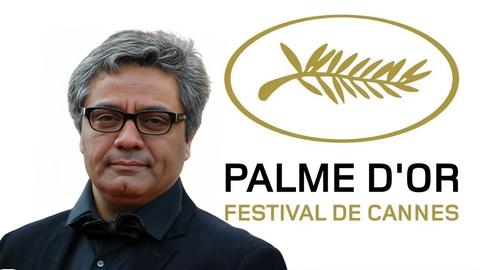The thesis behind the British Museum’s exhibition Luxury and Power - Persia to Greece is clear from the outset: when it comes to empire building, no matter how much you denigrate your opponents’ excesses, you will probably end up imitating them — or at the very least accommodating elements of them into your own ostentatious displays of power. On entering this compact show, the visitor immediately encounters a face-off between two impassive profiles psyching each other out — one Persianate in pale limestone, the other Greek in bronze weathered green. But on closer inspection, it appears that the fellow on the left sports a Greek-style wreath nestling in his Persian ringlets. On the opposite pillar, his opponent may be Apollo or Reshef, an underworld deity worshipped in Syria and Egypt, which was ruled by Persia’s Acaemenid kings. Both heads date from the fifth century BC and were discovered in Cyprus, where the imagery for the two gods was interchangeable. In other words, these contending cultures were not averse to a spot of imitation or cross-pollination. The three galleries that follow press the point; the next item on show is a golden panel, clearly Egyptian, depicting a pharaoh making offerings to Anubis and Isis. This pharaoh, however, turns out to be Darius the Great.
Between 490 and 479 BC, when Greece thwarted the efforts of the Persian empire to conquer it, many Greeks saw it as the victory of sobriety over an effete enemy, emasculated by luxurious indulgence. But the objects on display reveal the next ironic chapter of the story, because the flamboyant extravagance that characterised the Persian court was too strong a temptation to resist for austere, democratic Athens and later, the world of Alexander the Great, which unashamedly imitated and modified Persian objects across cultural borders.
Luxury was the byword for Achaemenid authority. Greek writers — who penned most of the surviving accounts of the far-reaching Persian empire — condemned the decadence of a court where opulent ceremonies and banquets were the order of the day. One such monarch’s menu on show here — not surprisingly noted by a disparaging Greek — required the demise of no fewer than 400 male sheep and 300 lambs, 100 oxen, 300 turtles, 400 fat geese and 100 goslings, and 600 small birds, all washed down by almost 5000 litres of wine. Indeed, the pleasure of excessive drinking was at the heart of Achaemenid revelries and is literally central to every room in this exhibition. Each of them is laid out around displays demonstrating the way people drank. In the Persian empire, sculpted drinking vessels of gleaming gold and silver, known as rhytons, required a considerable degree of skill and dexterity not only from their creators, but on the part of the drinker, as wine was poured — presumably by a sober slave — into a trumpet-ended funnel before flowing through a narrow spout set in a sculpted animal’s head, into the imbiber’s mouth. Why settle for a goblet when you can become intoxicated from a hole in a griffin’s chest?
The heady world of the Persian court, suffused throughout with the burning of incense, is further evoked through an informative display on frankincense, known to most of us as one of the gifts presented at Christ’s nativity. Arabia, it says, presented around 26 tonnes of the aromatic gum each year to the Persian king, to be used for medicines and perfumed oils.
As Persia’s arch-enemy Athens grew more powerful after the Greek-Persian wars, it loosened its curbing of personal wealth. Athens could now more comfortably absorb a Persian world that was no longer threatening. Where restraint was once the order of the day to contain social unrest, luxury was now allowed, albeit as an excuse to enhance the prestige of the city. Straight-laced Athenians found ways to adapt or redefine the Persian luxuries to make them acceptable to the Greek populace. In the second room, visitors encounter more rhytons, but less flashy, inventively moulded from clay into animal heads, including rams that symbolised heroism and military might. One from Athens has a drinking-party scene depicted around its neck. Another ingenious mug when stood upright, creates the outline of a bird of prey, but when tilted for use, transforms into a beaked head. The Persian oklasma dance, which became integrated into the cult of Dionysos, is petrified for all time here as a pottery flask for perfumed oil - made in Athens around 350 BC - shaped as a winged figure, wielding a tambourine.
The third and final room demonstrates how Alexander the Great, conqueror of the Achaemenids, also came to deploy astonishing displays of luxury to project authority and win the loyalty of local elites. Alexander enjoyed mixing up Persian and Macedonian dress. Particularly eye-catching is a sumptuous costume in lamb’s wool and fur with metallic adornments. Alexander himself adopted the tunic, cap and sash of Persian officials. But he drew a line when it came to wearing trousers, even when they were specially stitched in folds to free up the crotch for horse-riding. The Greeks shunned trousers as a defining characteristic of foreigners.
The kingdoms ruled by Alexander’s successors followed suit in their imitation of luxurious items, blending a variety of cultural motifs with local traditions to create a distinctive Hellenistic culture. An Egyptian alabaster head on show, which one would think an archetypal pharaoh figure, is in fact an early Hellenistic king, possibly Alexander himself or one of his immediate successors. How else might they depict themselves as legitimate rulers of Egypt but to imitate the glorious pharaohs of the past?
At the climax of the exhibition, is a veritable treasure trove of nine, dazzling gold rhytons dug up by chance in 1949 in Panagyurishte, Bulgaria — a Black Sea coastal region once known as Thrace that bridged Europe and Asia. In them the fusion is complete, as Persian, Greek, Anatolian and possibly Thracian styles are blended in exquisite vessels, all speaking of luxury and power. One in the shape of a goat is decorated with the Greek gods Hera, Artemis, Apollo and Nike. Even having their wine flowing from a spout between the goat’s legs failed, it seems, to deter the hedonistic Thracian partygoer.
Imitation, though, did not just proliferate from culture to culture. Not unlike the pound-shop replicas of designer perfumes today, copycat objects spilled onto the market to serve the aspiring lower echelons of society, allowing them to mimic elite behaviours without the expense. Those who could not afford precious metals, but cared what their neighbours thought of them, could settle for their cheaper equivalent hammered from sheets of silver or gold. They are, nevertheless, perfectly proportioned objects of great beauty. Honouring the departed by burying them with gold objects was often unaffordable, so an alternative emerged as cheaper materials were used, applied with thin layers of gold. A pottery cremation urn from the time of Alexander the Great includes three gilded Persian-style lion-griffins. Four terracotta ornaments are also gilded to resemble jewellery.When the Hellenistic kingdoms were gradually replaced by the Romans in the Mediterranean and by the Parthian empire across the middle east, exotic items continued to convey status and privilege, much as they do today. Yet while some Romans delighted in displaying their wealth, others regarded it as over-the-top and decadent. As the exhibition’s thesis itself concludes, this uneasy combination of desire and distrust continues in our own contemporary attitudes towards luxury goods.
If you are someone who decries the homogenous globalised culture of today, it is at once enlightening and sobering to see that human habits and behaviour — including the excessive alcohol consumption — have remained largely unchanged across millennia. Indeed, those who cannot remember the past are condemned to repeat it, even when it comes to luxurious indulgence.
Luxury and Power: Persia to Greece is at the British Museum until 13 August https://www.britishmuseum.org/exhibitions/luxury-and-power-persia-greece
Robert Weinberg is a writer on art and a radio and podcast producer, whose features and exhibition reviews have appeared in the Telegraph, Apollo, The British Art Journal and numerous other publications.
visit the accountability section
In this section of Iran Wire, you can contact the officials and launch your campaign for various problems


























comments